Step Ten: Review and maintain your child protection program
A program is only effective when it is followed and evaluated. Once you have child abuse response and prevention protocols and policies in place, create a plan to review the program regularly.
Evaluation
Regular evaluation of the church’s child abuse response and prevention plan is an important component of the program. How do you measure success? One piece is capturing the numbers on at least an annual basis. Some data that may be helpful:
- Audit staff and employee files to ensure background checks were completed. Anyone without a completed background check on file must get one done before any further contact with children.
- Track the trainings that are required by church policy in a spreadsheet or other document to keep people on track to complete these.
- Track the number of mandated reports made every year. Almost every church that regularly offers youth programming will find an instance of abuse that needs reporting every year. Going several years without a report should be a red flag that people are missing signs of abuse and neglect.
- Track the number of youths that disclose abuse every year.
Measuring outcomes is more difficult than getting numbers, but it is a powerful tool to determine effectiveness. Outcomes are changes in behaviors that result from the program. Volunteer/staff outcomes could include reporting more understanding of abuse and neglect, a demonstrated willingness to make a mandated report, or an increase in showing empathy. Parent surveys could include questions about perceived safety of the program. Child outcomes could include openness with teachers, reporting feeling safer at church programs, or saying they have a trusted adult they can talk to.
Measuring outcomes is a three-step process.
- Decide your goals and objectives for the child abuse response and prevention plan. This determines what defines success. Once you know what will mean success, you can plan for what data will tell you if success is achieved.
- Collect data. Once you know what you want to achieve, you focus on the data needed to show your achievement. Then set up the right system to collect the data. Often, that means asking participants the same questions at the beginning and ending of an activity or program. For example: Volunteers may be asked, “On a scale of 1 to 10, how well do you know the signs of child abuse and neglect?” before and after a training to evaluate their learning.
- Analyze the data. After data is collected, it needs to be used. Do volunteers regularly come away from training with a better understanding of the signs of child abuse? If not, how can training be changed or enhanced to better educate them?
Maintenance
Program evaluation will assist with maintenance of the program. It will identify weak areas that need to be modified or expanded.
Child abuse and neglect, trauma, and resiliency are the subjects of active research. As more knowledge is gained, best practices change. Part of program maintenance is to regularly review the research in child abuse and neglect so that new findings can be incorporated into church protocols. At least one person on the team should be assigned to stay knowledgeable in these areas and report findings to church leaders.
On an annual basis, the church’s policies and procedures should be reviewed and updated. This will keep the church’s approach to child abuse and neglect up to date. Regular reviews also reinforce awareness of the need to keep our most vulnerable members safe from abuse.
Michelle Markgraf, Freedom for the Captives
- Step One: Form a Child Safety Committee
- Step Two: Create Urgency
- Step Three: Know Your Volunteers
- Sample Site Assessment Checklist
- Step Four: Assess Your Space
- Sample Standards for Interactions with Minors and/or Vulnerable Adults
- Step Five: Implement Guidelines for Youth Leaders
- Step Six: Train adults to recognize and respond to abuse
- Step Seven: Support abuse survivors
- Step Eight: Create guidelines for responding to abuse
- Step Nine: Educate children about personal safety
- Step Ten: Review and maintain your child protection program




